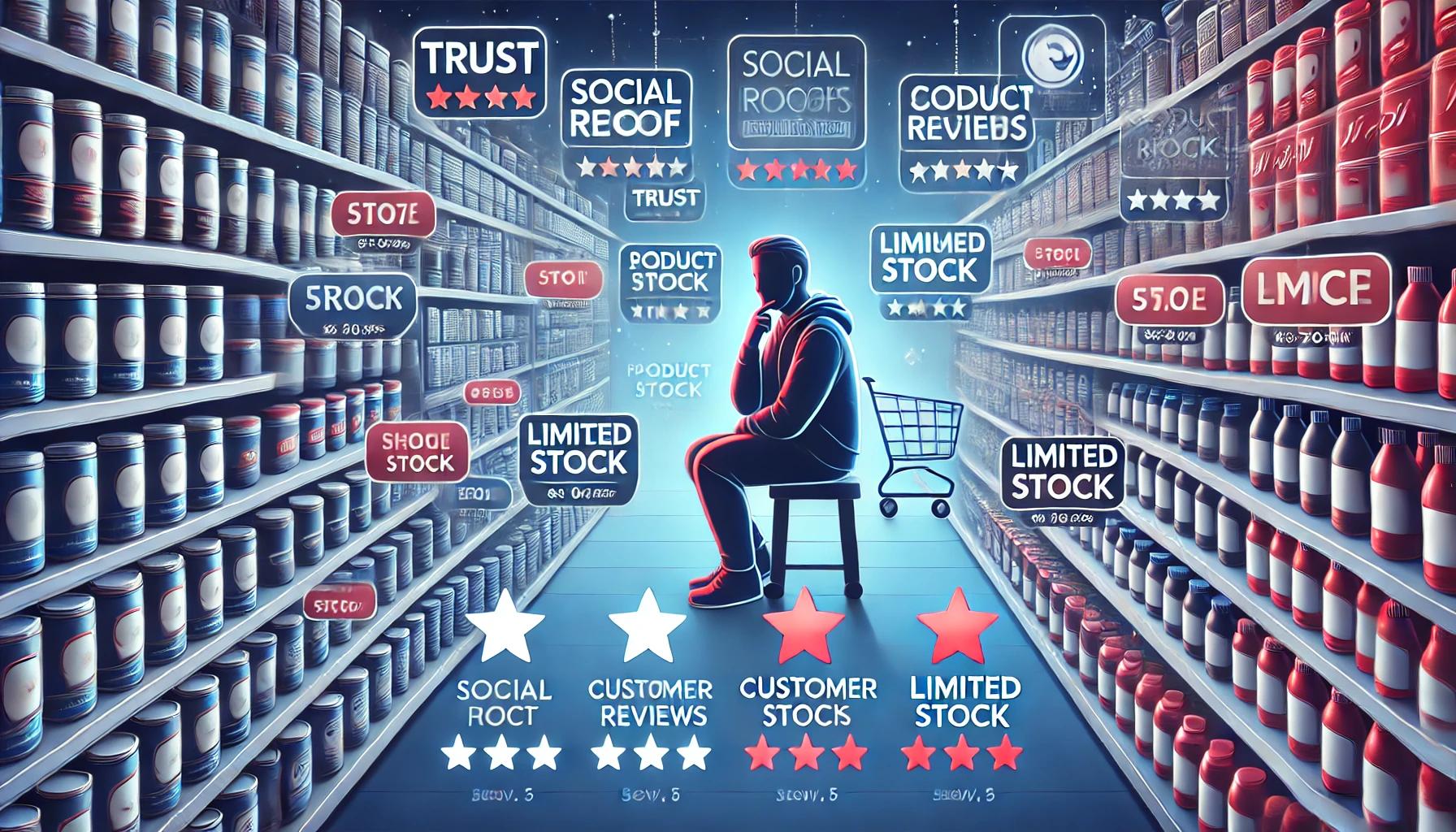Psychology of the Buyer: What Makes People Buy?
How Psychology Influences Consumer Decisions
Introduction
In the modern world of commerce, psychological aspects play a crucial role in how people make purchasing decisions. Marketers and companies study these mechanisms to better understand their customers and predict their behavior. In this article, we will explore the key psychological factors that influence consumer decisions and how they can be leveraged to boost sales.
Psychological Factors Influencing Buyer Behavior
The Social Proof Effect
People tend to trust what others do. When a potential buyer sees that other customers are praising a product or service, they are more likely to make a purchase. In Solomon Asch's classic experiment on conformity, participants changed their opinions under group pressure. In online commerce, this manifests through reviews, ratings, and recommendations.
The Scarcity Principle
When a product becomes scarce, its value in the eyes of the consumer increases. This theory was studied by Robert Cialdini in his work Influence: The Psychology of Persuasion. Limited offers and “last items in stock” compel people to buy faster, fearing they will miss the opportunity.
The Anchoring Effect
When a buyer sees a high price for an item, their perception of all subsequent prices changes. This phenomenon is called "anchoring." For example, if you first see an expensive product and then a cheaper one, the second item seems like a better deal. Experiments by Daniel Kahneman and Amos Tversky showed that initial information strongly influences a person’s subsequent decisions.
The Psychology of Color
Colors can directly impact the perception of a brand or product. For instance, blue is associated with trust and stability, while red signifies impulsiveness and passion. Companies use this knowledge to create emotions that influence purchasing decisions.
The Social Comparison Theory
People often compare themselves to others and want to meet certain standards. This is particularly important in fashion, technology, and luxury segments. Psychologist Leon Festinger, in his Social Comparison Theory, described how people strive to look better in the eyes of others. In marketing, this principle is used to create products that help consumers feel more successful.
The Paradox of Choice and Cognitive Load
People tend to avoid complex decisions. Research by Sheena Iyengar and Mark Lepper showed that too many options can negatively impact a person’s desire to make a choice. Simplifying the decision-making process and focusing on a few key offers increases conversion rates.
The Recency and Availability Effect
People are more likely to remember information that was presented recently or is most readily accessible in their memory. This plays a crucial role in repeat sales and email marketing, where companies maintain constant contact with customers to keep their brand "top of mind."
How to Use Psychology in Commerce?
Create a Sense of Urgency Using phrases like "only today" or "limited stock" can accelerate decision-making.
Social Proof Showcase reviews, customer photos, and ratings on your site. Shoppers trust other people, especially those with similar interests and values.
Simplify Choices Don’t overwhelm the buyer with too many options. Highlight key products with clear benefits.
Tap into Emotional Needs Use colors, symbols, and images that evoke the right emotions in your customers.
Segment Your Audience Dividing customers into groups based on psychological characteristics helps provide more personalized solutions.
Conclusion
Understanding consumer psychology is key to successful sales. Psychological triggers like social proof, scarcity, anchoring, and even color schemes can significantly influence buyer behavior. By leveraging this knowledge, companies can improve their marketing strategies, boost conversion rates, and create a stronger connection with their customers.
References
- Asch, S. E. (1955). Opinions and Social Pressure. Scientific American, 193(5), 31-35.
- Cialdini, R. B. (2006). Influence: The Psychology of Persuasion. Harper Business.
- Tversky, A., & Kahneman, D. (1974). Judgment under Uncertainty: Heuristics and Biases. Science, 185(4157), 1124-1131.
- Singh, S. (2006). Impact of color on marketing. Management Decision, 44(6), 783-789.
- Festinger, L. (1954). A Theory of Social Comparison Processes. Human Relations, 7(2), 117-140.
- Iyengar, S. S., & Lepper, M. R. (2000). When Choice Is Demotivating: Can One Desire Too Much of a Good Thing?. Journal of Personality and Social Psychology, 79(6), 995-1006.
